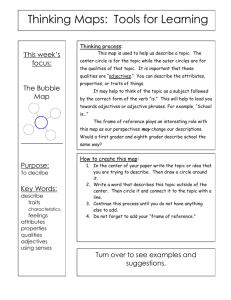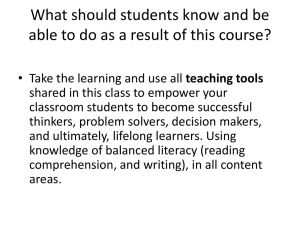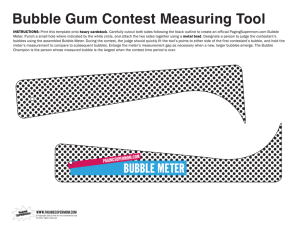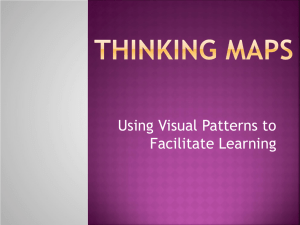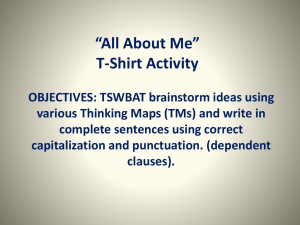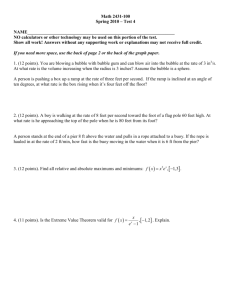Thinking Maps
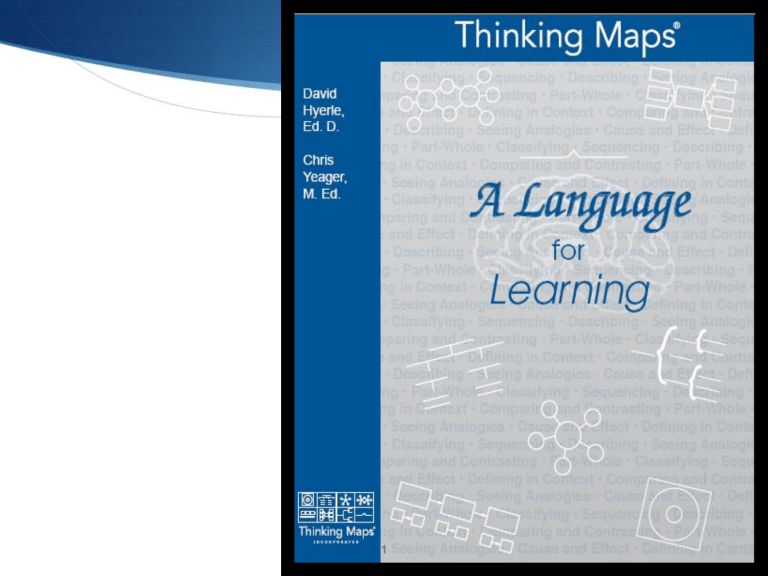
Welcome to
Thinking
Maps
®
1
TODAY ’ S AGENDA
What are Thinking Maps & why do they work?
What is the purpose of each map?
What is the Memorial High School Thinking Maps plan?
How will I use the Thinking Maps?
What support will I get throughout the year to help me learn
Thinking Maps?
2
Initial Training
First Day Back
Faculty Meetings
Time Line
Advisory Class
Website
Parent Letter
Introductory Period
8 Weeks
Introduction of each map in advisories
Student Product Displays
CWTs
Weekly Bulletin
Emails
Second Eight Weeks
8 Weeks Thinking Maps with
Frame of Reference and Color
Department Student Product Display
Second Follow Up
9 th Week
Student Product Displays
Teacher Survey
First Follow Up
9 th Week
Student Products
Displays
Faculty Meetings
Third Eight Weeks
8 Weeks
Thinking Map Extensions
“Off the Map”
Student Product Displays
CWTs
Third Follow Up
Student Products
Faculty Meetings
RTI Connection
School Wide Closure
Teacher Surveys
Student Surveys
End Products
3
Jump Start Second Year
Ideas for Year 2
Results of Assessments for Year 2 Guide
To use Thinking Maps as a
“ common visual language ” in your learning community for transferring thinking processes, integrating learning, and for continuously assessing progress.
4
What are Thinking Maps?
• Developed in 1988 by Dr. David Hyerle
• Each map is based on a cognitive skill such as comparing and contrasting, sequencing, classifying, and cause-effect reasoning
• Can be utilized individually or in various combinations to form a common visual language for students and teachers at all grade levels, in all subjects
• Used to improve the basics of reading, writing, and mathematics as well as for problem solving and the development of higher order thinking skills
5
What is the Difference?
6
Eight Different Maps
7
What are
Thinking
Maps and how are they different from
Graphic
Organizers?
Use a Circle
Map to define
Thinking
Maps.
8
80% of all information that comes into our brain is
VISUAL
40% of all nerve fibers connected to the brain are linked to the retina
-
Eric Jensen,
Brain Based
Learning
36,000 visual messages per hour may be registered by the eyes.
9
10
11
12
13
The Thinking Maps give a concrete visual pattern for an abstract cognitive skill.
14
“
Thinking Maps store information the way the brain does.
”
Pat Wolfe
July 2005
15
How the Brain Processes Information
Senses
Register
Information
Areas in the Brain
Filter Information
Emotion Meaning
Building
Networks
Networks
Strengthened
Lost
Long
Term
Memory
Lost
Networks
Extended
16 Page 242
17
Dendrites
Cell Body
Synapse
18
Axon
NEURONS THAT FIRE TOGETHER
GET WIRED TOGETHER.
THAT IS WHAT A PATTERN IS!
19
20
Thought process: Sequencing
When do you use sequencing in:
READING?
WRITING?
SCIENCE?
MATH?
SOCIAL STUDIES?
THE ARTS?
In every instance, you could use a
FLOW MAP
21
22
23
24
Middle
School
Social
Studies
25
High
School
English
26
27
SET
TEACHER / STUDENT INPUT
28
PROCESSING
29
EXTENSION
30
CLOSURE
31
First Thinking Map
The Circle Map
32
Circle Map
Thinking Process: Defining in Context
Key Question: How are you defining this thing or idea?
Key Words and Phrases: List, define, tell everything you know, brainstorm, identify, relate prior knowledge, describe, explore the meaning
Design: the topic is in the middle, smaller circle. Everything you know about the topic is in the larger circle. A box, that may be included, around the entire map is a “ Frame of Reference ” that is used to answer the question “ How did I learn this?
” (The frame of reference can be used around any of the maps
Common Uses: Brainstorm for writing, used as a starting point during the prewriting stage, defining words, identifying audience and author ’ s point of view
Writing Mode: Point of View Essay
33
The Circle Map
Defining in Context
34
35
36
37
38
Cadillac scarves
?
sideburns
May still be alive
39
Definition (in own words) Characteristics
New materials are NOT formed
Same
A change in size, shape, or state of matter
Physical
Change matter present before and after change
Ice melting
Cutting hair
Breaking a glass
Definition
A triangle with one right angle
Triangle with a 90 degree angle
Right
Triangle
Visual Representation
Second Thinking Map
The Bubble Map
42
Bubble Map
Thinking Process: Describing Qualities; Characterization
Key Question: How are you describing this thing? What adjectives best describe it?
Key Words and Phrases: Describe, use vivid language, describe feelings, observe using the five senses
Design: The topic being described is in the center bubble. The outer bubbles contain adjectives and adjective phrases describing the topic.
Common Uses: Describing things, identifying qualities, character traits, attributes and/or properties of things. The Bubble Map is a tool for enriching students ’ abilities to identify qualities and use descriptive words.
Writing Mode: Descriptive Writing
The Bubble Map
Describing
44
45
46
47
48
Science
49
Second Thinking Map
The Double Bubble Map
50
Double Bubble
Thinking Process: Comparing and Contrasting
Key Question: What are the similar and different qualities of these things?
Key Words and Phrases: Compare/contrast, discuss similarities and differences, prioritize essential characteristics, distinguish between, differentiate
Design: In the center circles are the words for the two things being compared and contrasted. In the middle bubbles, use terms to show similarities. In the outside bubbles, describe the differences. If there are too many similarities or differences, students should prioritize and keep only the most important.
Common Uses: A tool for comparing and contrasting two things.
Writing Mode: Comparison Essay
The Double Bubble Map
Comparing and Contrasting
52
53
54
55
58
The square root function A parabola
59
60
61
Useful Websites
Presentation created and modified using the following resources.
Examples of each map grades K-6 http://fdlrs.brevard.k12.fl.us/ThinkingMaps/default.html
Newsletters devoted to each Thinking Map http://www.kcclc.org/thinkingmaps2?print-friendly=true
Chippewa Valley ELA Website http://chippewavalleyela.pbworks.com
